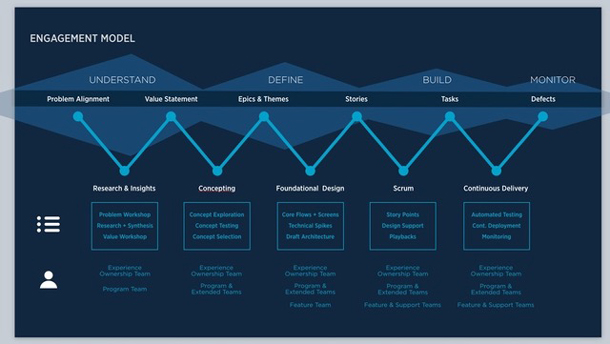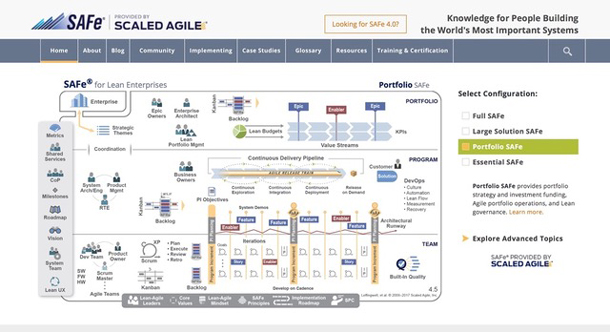The United Services Automobile Association (USAA) is a Texas-based Fortune 500 diversified financial services group of companies that provides banking, investing, and insurance to people and families who serve, or have served, in the United States military. While a technology-driven company, USAA also has a strong history of customer service. I was familiar with the products and services offered by USAA through my father and brother, both veterans. My personal experience with USAA involved speaking to a Member Service Representative (MSR) about a brokerage account. I was thoroughly impressed by the level of service provided. Since working for USAA, I realize MSRs are essential to our business because without their superb skills we would be just another bland financial institution.
USAA recently created a new role for the Chief Design Office (CDO) to translate the same high-touch, “white glove” concierge MSR interactions into digital experiences. To solve the challenge of interpreting revered member service into the digital world, the CDO is embedding Design Thinking principles into the existing Agile framework. Additionally, these new methodologies must be “folded” into our SAFe Agile practice. This article will describe USAA’s process of transforming a traditional IT-driven model to include Design Thinking in the Human-Centered Design (HCD) process. Design Thinking is becoming an integral part of USAA’s engagement model with its members, IT division, and business cohorts.
Design Thinking works within markets and technological constraints, development cycles, and considers all the ways a user might interact with a business or organization. Incorporating Design Thinking within the larger HCD framework that USAA uses for all service and product lines means ideation begins with the user. Our research methodologies account for every human who comes into contact with our products across all touchpoints. USAA’s Engagement Model (Figure 1) illustrates how combining the HCD process with Design Thinking is helping to evolve a traditional IT process to account for a world in which outstanding customer service must be delivered through digital experiences. Our engagement model incorporates human-centered design within our program layers, and we are “baking” Design Thinking into each phase of the model.

Understand
The traditional IT-driven model has been to fix defects as they arise. IT-driven solutions are useful for short-term issues, but if we are looking to create modern online experiences, we need to employ user research and find the right questions to make our online products elegant and straightforward. Grounding our design in human-centered methods allows our teams to advocate for the member because we have solid qualitative data guiding the crafting of intuitive experiences.
Ask the right questions.
Define
Don’t be afraid to ask your partners to retrench and allow your team to reframe a problem if it doesn’t seem to be the right problem. We found that our analytics were pointing us to the wrong issue. Due to a convoluted path in our analytics tracker, we were “double-dipping” in our screen drop-off rate. It took us several passes of our “happy” paths to understanding that we were trying to solve the wrong problem.
Reframe the problem.
Build
We are tasked to fix a “slight” issue that on the surface seems simple. However, due to legacy code and server infrastructure, what looks like a minor UI change can often be more complex due to existing technical dependencies. These technical issues present opportunities to reconsider and invest in research to see what our members need at a macro level. Instead of spinning our wheels trying to solve small issues, we are continually negotiating with our business partners on what is feasible and how we can align to achieve member delight.
Align with your development team.
Monitor
Working in partnership with our data team, we set up analytics to measure before and after the launch of a new experience. Many of our features share lines of business and we have to coordinate what we measure and how we measure it. Many of our projects involve legacy systems and infrastructure that we must upgrade while we are enhancing the user experience.
Plan how you will measure your success and refine it often.
USAA SAFe Agile and Design Thinking
In addition to the HCD process, USAA utilizes Design Thinking at an enterprise-wide level in conjunction with the Scaled Agile Framework (SAFe) Agile framework. SAFe (Figure 2) helps USAA’s program teams manage the complex challenges of developing and delivering enterprise class software and systems in the least amount of lead-time. SAFe aligns many Agile collaborative teams and surfaces risks early in the coordination process. USAA’s CDO is synchronizing with business and IT divisions to create a seamless integration of Design Thinking with SAFe.

While challenging to combine Agile with the small scrum practice for design, incorporating Design Thinking into our program layer allows for better decision making as we continually interview and test with our members.
USAA instituted a design education team to instruct executives and business owners in the principles of Design Thinking. Because project ownership may cross over many lines of business and integrate across product lines, the teams tackling scaled projects must understand Design Thinking processes and methods.
The goal of the design education team is to help our executives understand the importance of taking the time to discover our members’ needs. The business partners are learning how design phases can align to our Agile sprints and utilizing a robust toolset developed to gather members’ actual needs for website and application design. In the discovery phase we gather all of our business data and secondary research as well as conduct member interviews.
From this primary research, we define the problem and ideate around how to solve for member problems. Then we produce low fidelity prototypes that we test with more of our members to understand how the new ideas would fit into their financial life and goals. We develop hypotheses from our primary member research and secondary analysis which lead to more fully formed concepts. We prototype several chosen concepts in medium fidelity and work with our development teams to resolve feasibility issues—remember those pesky legacy systems? Once we have solidified our designs with our IT partners, we continually test and offer design support throughout the development process. We are bringing in partners earlier in the process, such as the accessibility team, to ensure we are being as inclusive as possible. This inclusion of members and internal teams takes time and effort—ultimately, it will create better user experiences that mimic our MSR customer service.
The USAA Design Office is partnering with teams across the organization to create user experiences that delight our members and help simplify otherwise complex digital experiences. We do this through infusing existing Agile processes with Design Thinking and HCD principles, starting with a core focus on understanding and designing for user needs. Our members trust us, and we need to provide digital products that serve them better. USAA’s investment of economic and human capital into this modern design studio reflects our history of customer service in the digital age. This focus on member needs will set us apart from other financial institutions.
[greybox]
Further Reading:
[/greybox]
